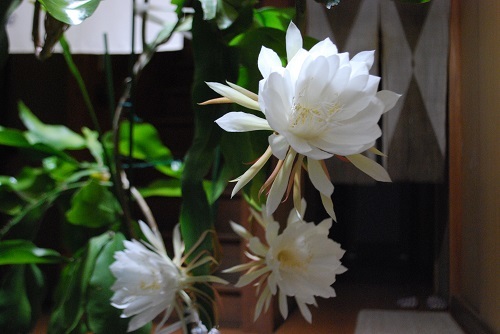Glossary
Kimono
Kimono is Japanese traditional clothing.
Furisode
Kimono for young women. Typically, unmarried young women wear this type, and it is colorful and gorgeous. The most distinctive characteristic of Furisode is that it has long sleeves.
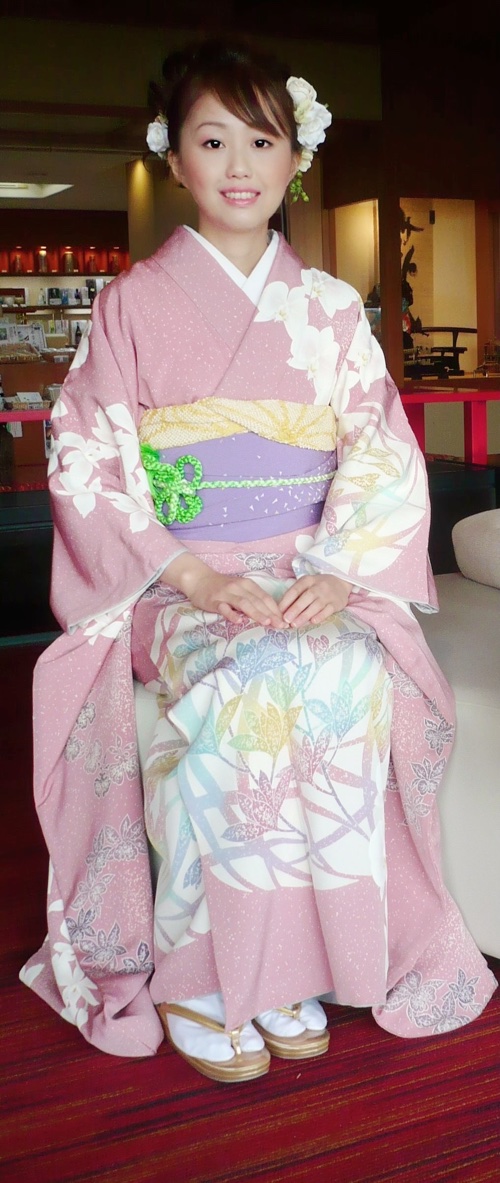
Tomesode
The most formal kimono for married women. It does not have long sleeves.
Houmongi
Both unmarried and married women wear this type of kimono. It is less formal than Furisode and Tomesode, but it is appropriate for most of the formal events.
Yuzen
Yuzen is a Japanese traditional dyeing method of pattern, and it is usually used for making a kimono. There are two types of Yuzen; hand-painted Yuzen and stencil dyeing Yuzen. There are more than 20 steps to create Yuzen kimono, and some of them are, 1) drawing outlines of patterns with dye resistant paste, 2) dyeing cloth with colors, and 3) removing pastes by washing. After pastes are removed, only the areas where the paste is applied remain white. By using this method, the individual pattern can be dyed clearly.
Obi
Obi is a belt for a kimono.
Manori
Manori is a rice paste, and it is used for protection against dyeing (see step2 at Makinori section).
Makinori
Makinori is finely crushed dried pastes, and it is used to express snowfall, mists, and other stipple patterns.
The process of making Makinori
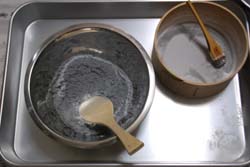
Step1:
Knead rice bran and zinc dust with hot water, and steam well.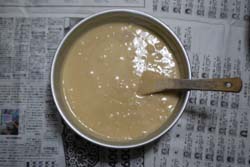
Step2:
Add Mijin Nuka (A kind of rice bran which does not contain much fat, and the color is brown) and salt to Mochi powder and mix well. This is "Manori".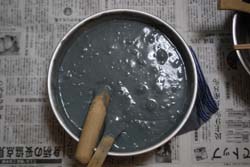
Step3:
Mix step 1 and 2 thoroughly and steam it two hours.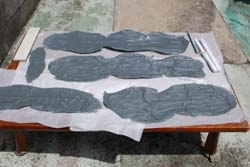
Step4:
Apply a thin layer of step 3 on a paper with a nonstick surface and dry it in the sun.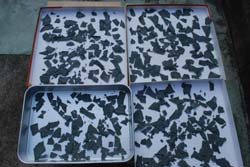
Step5:
Brake it into small pieces, and dry them again.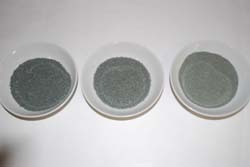
Step6:
Put them through a sieve to arrange them by the size.Shirozukenori
Shirozukenori is the most strongest dye resistant paste for a cloth.
The process of making Shirozukenori
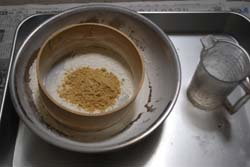
Step1:
Mix Mochi powder and rice bran.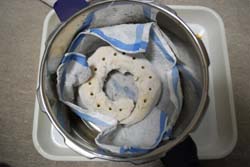
Step2:
Add hot water and knead it, and make it to doughnut shape. Make some small holes to it.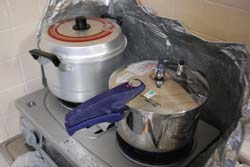
Step3:
Steam it with pressure cookers for one hour.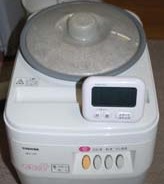
Step4:
Pound paste using a mochi making machine.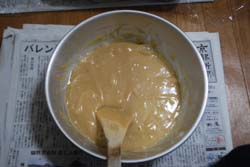
Step5:
Add saltwater to pounded paste and knead it well.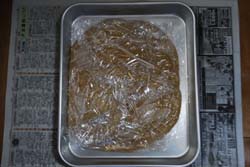
Step6:
Freeze it overnight.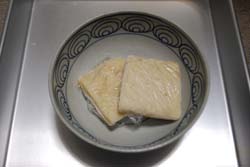
Step7:
Cut it smaller pieces on the next day. Store them in a freezer. When using them, thaw them and heat in hot water.Mochinori
Mochinori is a generic name of all kinds of dye resistant pastes made with Mochi powder.
Funori
It is a glue made from seaweed called Funori.
How to make Funori:
Soak it in water and boil it until it becomes soft. Filter it with a cloth.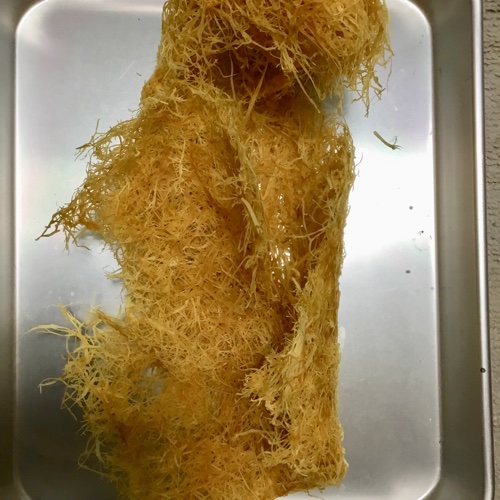
Dried Funori.
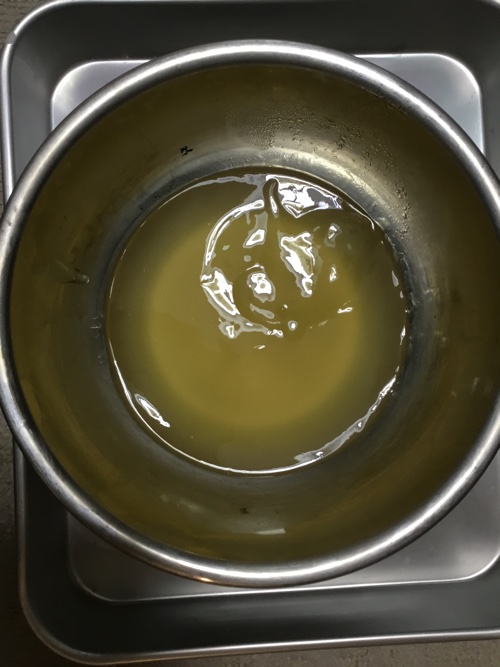
Funori glue.
Sandoguro
It is a dyeing method in which a cloth is dyed by a brush three times with a black color dye made from a plant.
Sashiyuzen
It is one of the processes of Yuzen dyeing that applying colors inside of the lines drawn with dye resistant pastes.
Itome
Lines of dye resistant pastes.
Epiphyllum oxypetalum
Japanese name of the flower is Gekka Bijin [月下美人]. It is a beautiful white flower, but it can bloom only one night.
